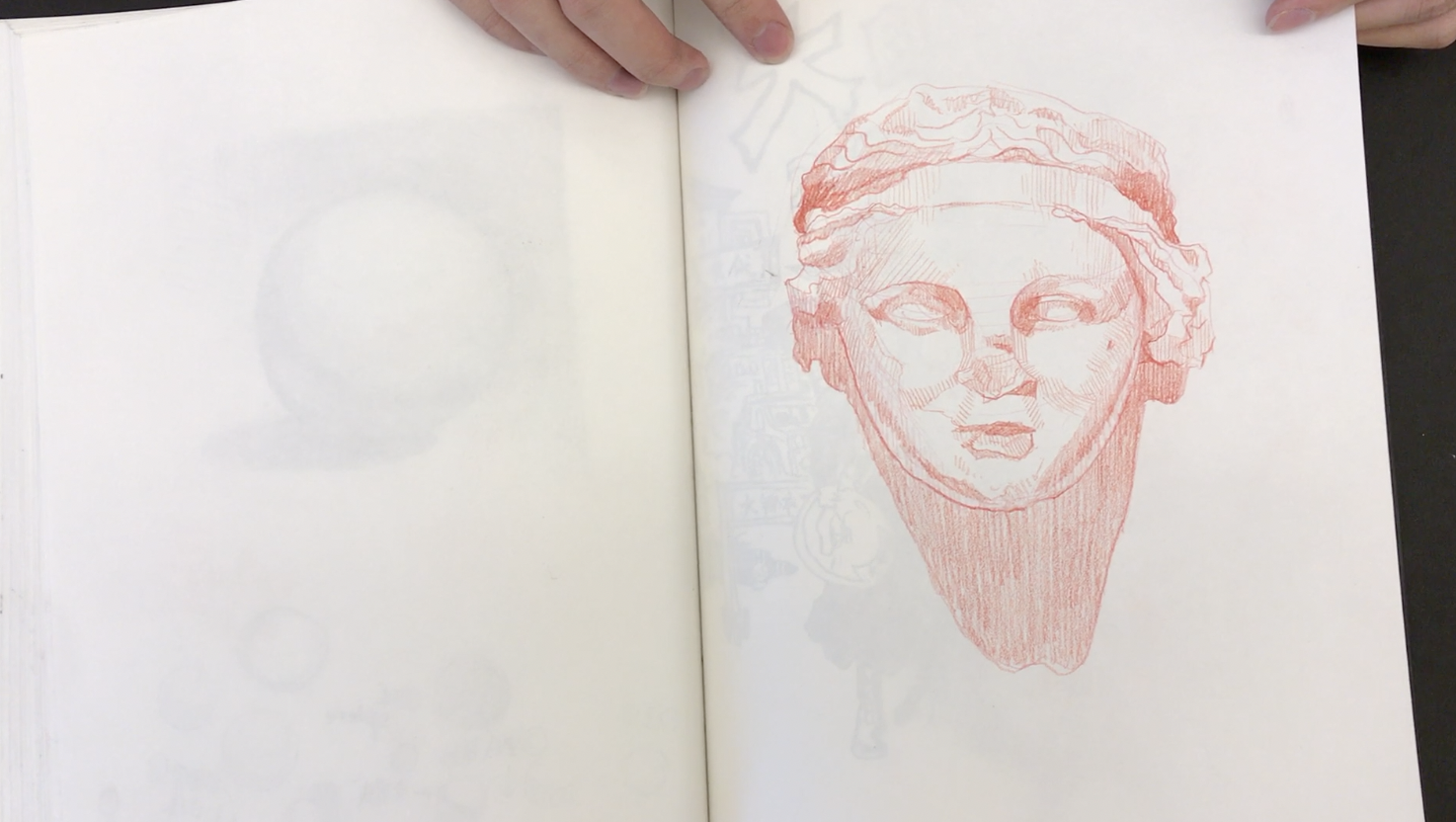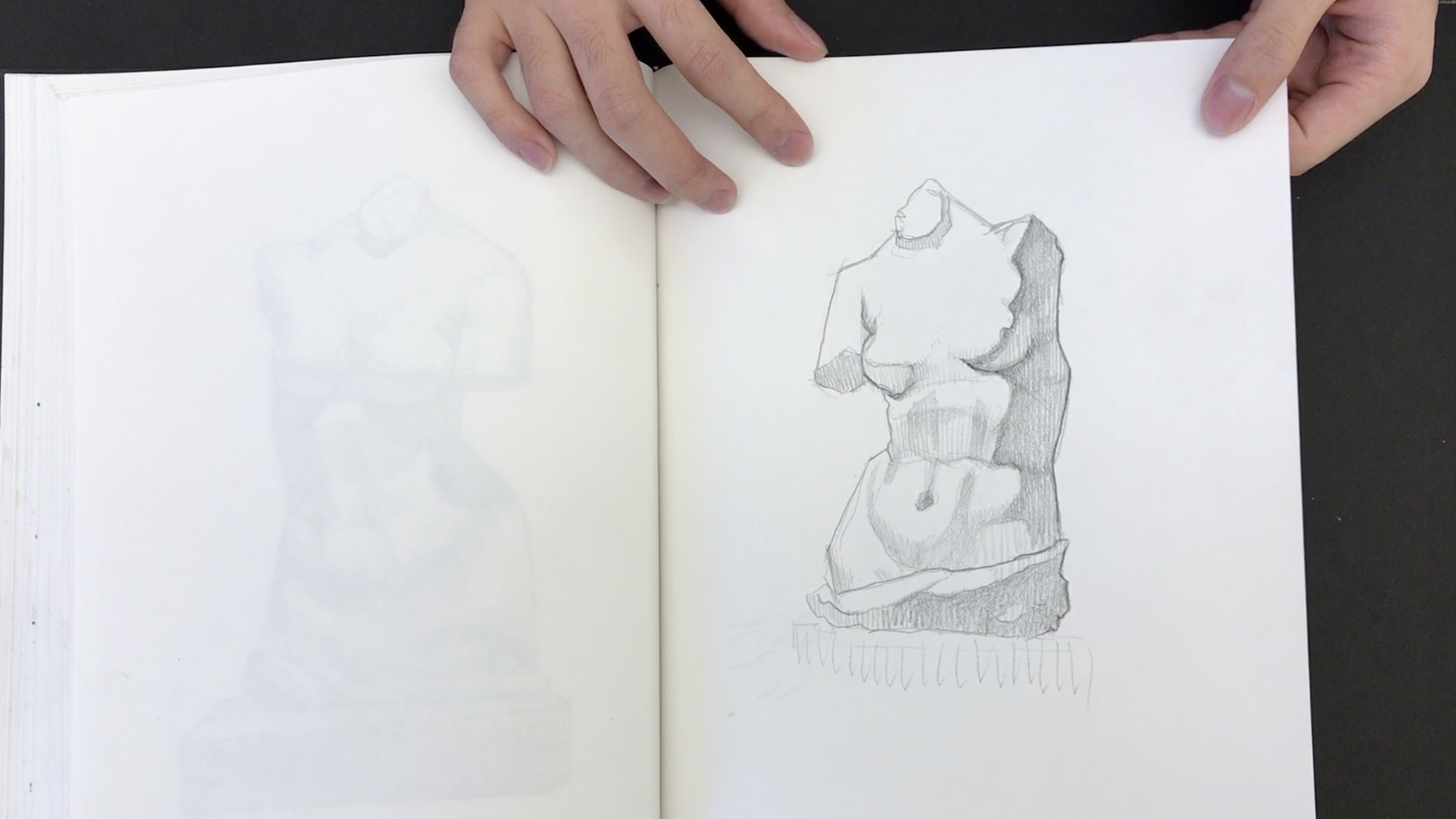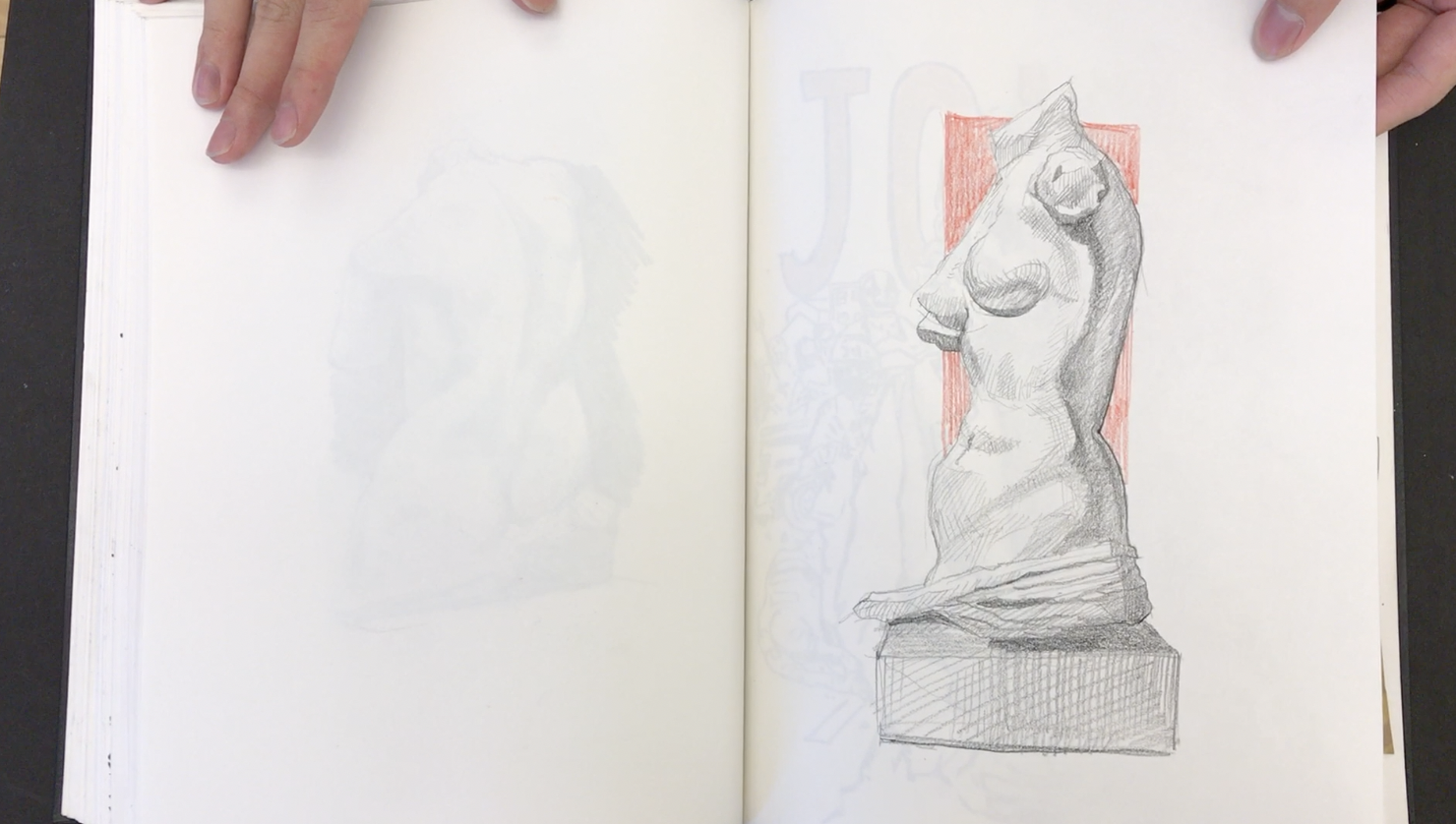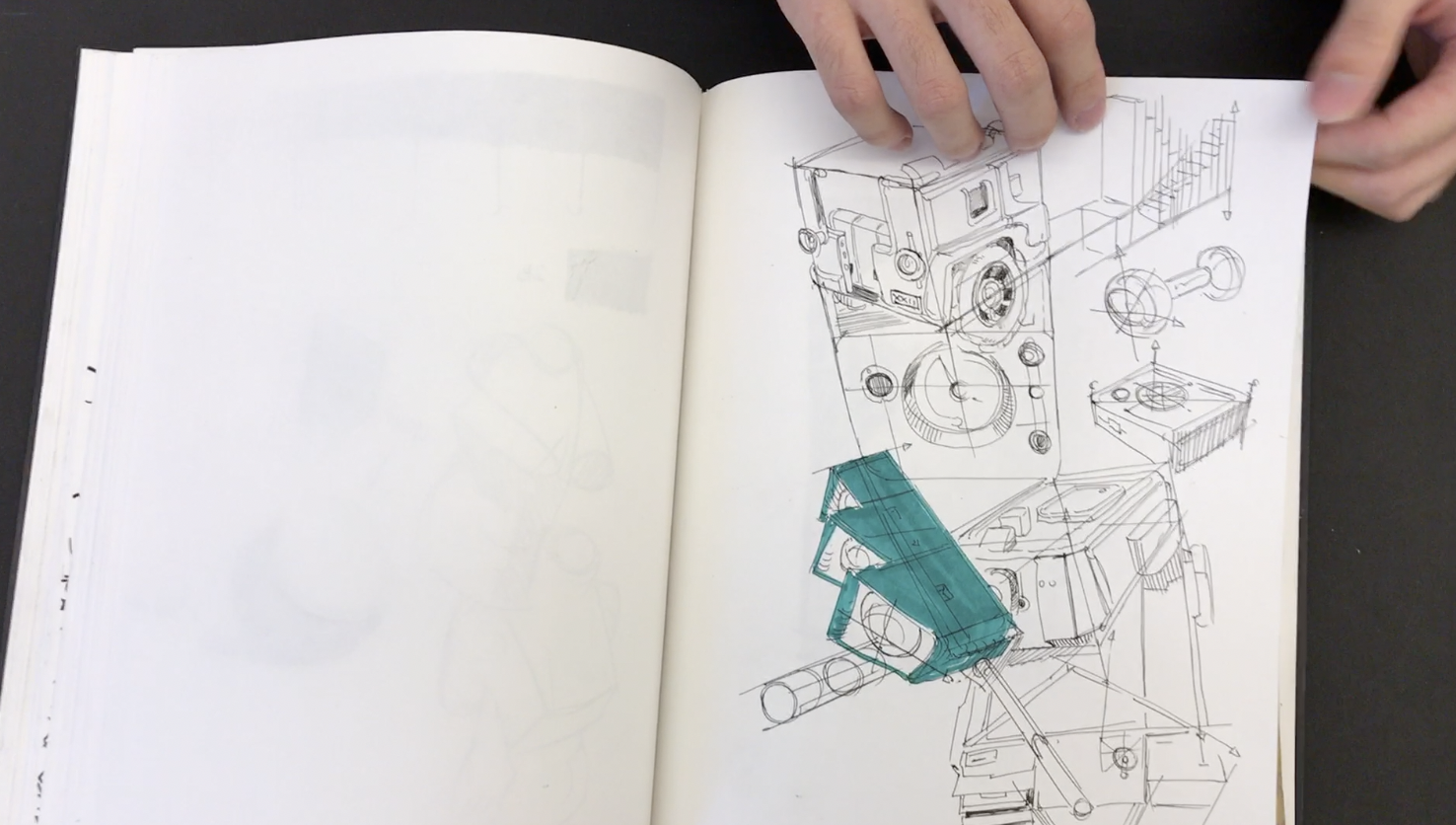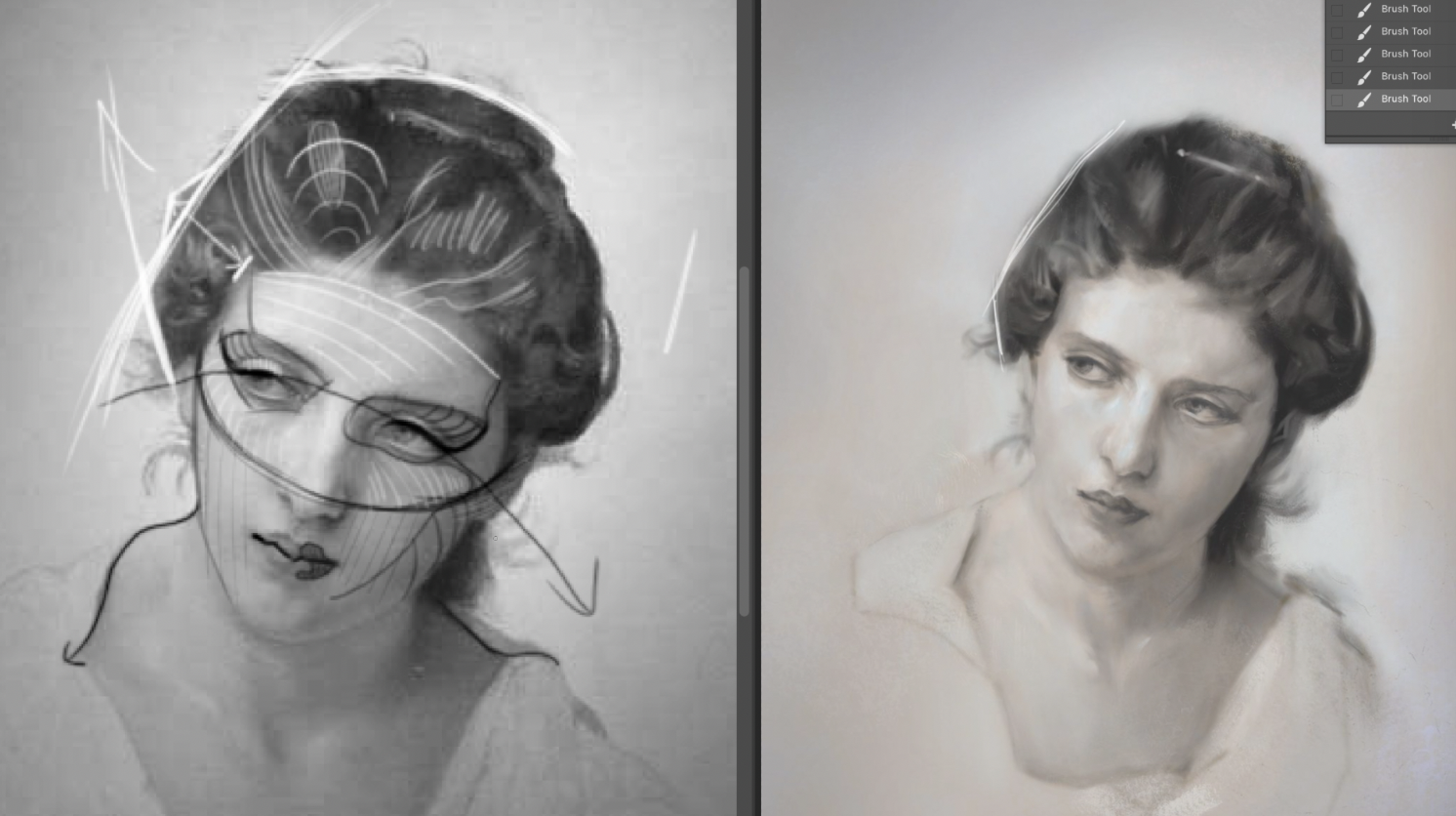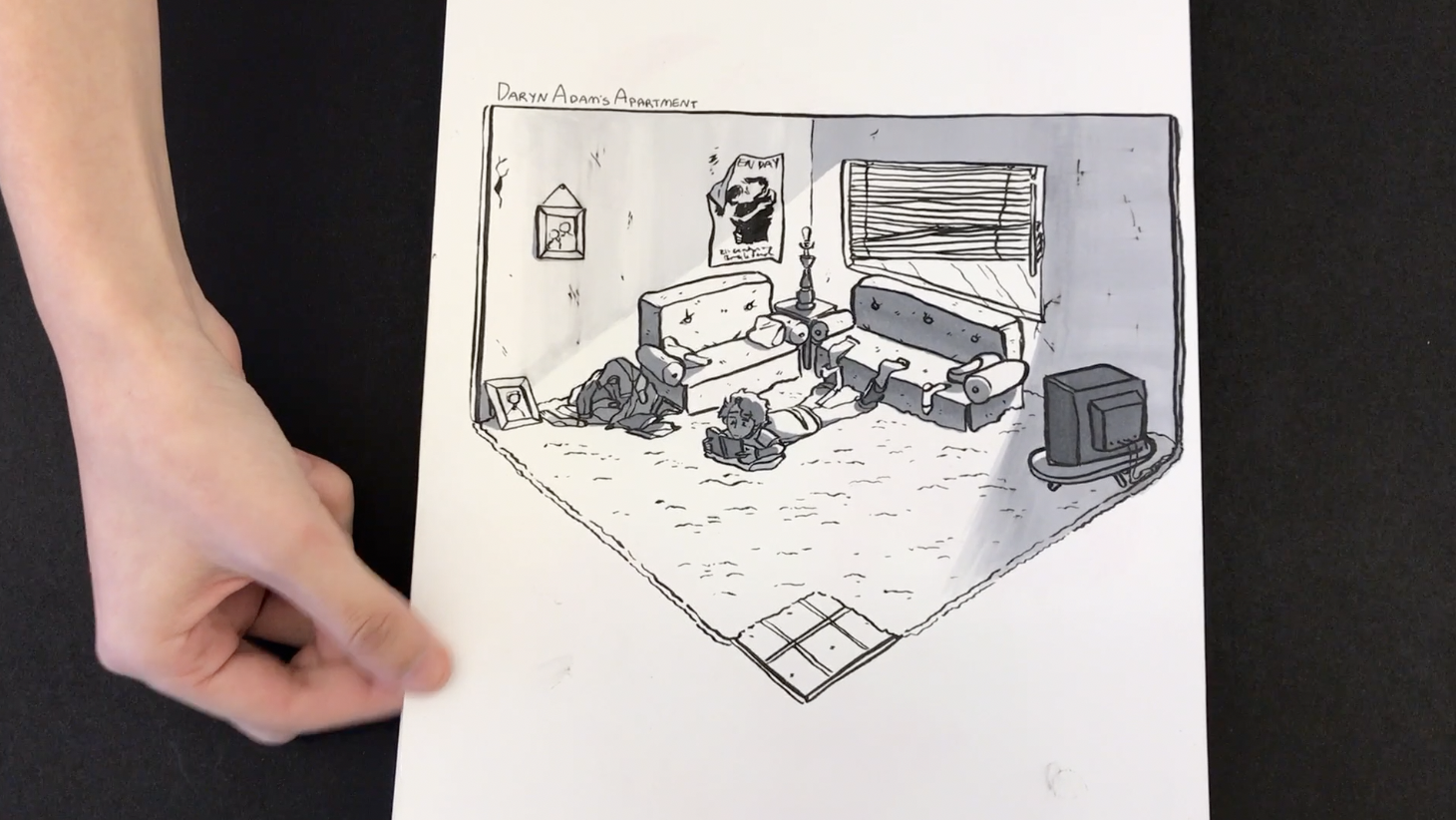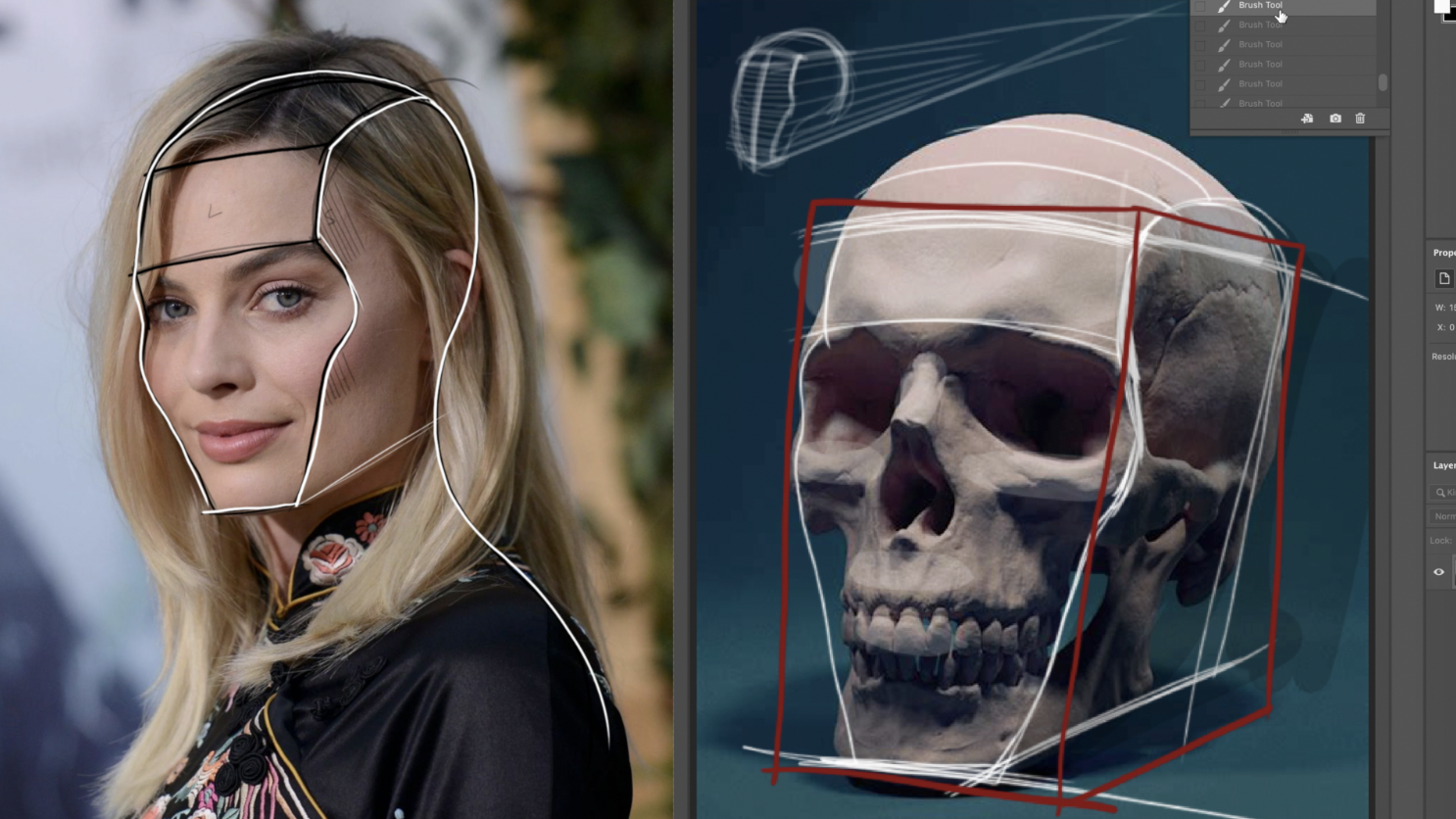
The Four Boxes Technique
Jan recently posted up this portrait drawing for a critique. It was from my Shea Portrait course. Jan is looking to get a likeness when drawing a portrait.
Being able to get a likeness is difficult. Sometimes a student will need to use many diverse techniques. Some techniques click with certain students while others do not. You will need to experiment with multiple techniques until you find the one that works for you.
In this video, I share with Jan the Four Boxes Technique. It’s pretty simple. First, you should draw the exact size of your photo reference frame. So if your reference is 8 x 10 inches, draw an 8 x 10-inch boarder on your piece of paper.
You will need to split the frame vertically down the middle, then across the middle. This will leave you with four boxes. You then draw what is in each box. Nothing earth -shattering here.
this is just a drawing technique that will help you look at drawing a portrait differently. Again, this is just an exercise. This four boxes technique just give you a different perspective on drawing correct proportions.
Thanks so much, Jan for sharing your artwork in DTO’s member critique gallery.
If you are looking to get your artwork critique definitely check out







